Q
Which model year of Toyota Corolla is the most reliable?
The Toyota Corolla is a best - selling and reliable model. It's hard to directly determine which model year is the most reliable. However, according to some professional researches and general feedback, the 2011 - 2013 models perform well. They are highly rated among drivers, with few complaints or recalls from the National Highway Traffic Safety Administration (NHTSA). They also get good scores on websites like Edmunds and Kelley Blue Book. Experts praise their comfort and safety, and consumers recognize their reliability and long service life.
In addition, the 2018 - 2021 models are also worth paying attention to. These models are extremely reliable, with almost no serious complaints or problems. They were named IIHS Top Safety Picks in three out of four years, scoring high in passenger safety and vehicle structural integrity. The 2018 - 2019 models are equipped with a 1.8 - liter engine with a power output between 132 and 140 horsepower. The 2020 - 2021 models offer a choice between a 1.8 - liter four - cylinder engine and a 2.0 - liter engine, and there is also a hybrid option. Models from these years all have their own advantages, providing consumers with different reliable choices.
Special Disclaimer: This content is published by users and does not represent the views or position of PCauto.
Related Q&A
Q
Which model year of Toyota Corolla is the best?
There isn't an absolute best model year of Toyota Corolla. Each model year has its own advantages, and the choice depends on individual needs and budgets. The 2025 Toyota Corolla GR Sport is priced at RM 149,800, running on gasoline. In terms of power, its engine has a maximum horsepower of 139PS and a maximum power of 103kw. It is equipped with a 10 - speed CVT transmission. It has active safety features like lane - change assist and lane departure warning, as well as comfortable and technological configurations such as a 12.3 - inch color TFT dashboard and a 10 - inch capacitive touchscreen.
Several versions in 2023, such as the 1.8E, 1.8G, and GR Sport, also have their own highlights. The 1.8E is priced at RM 139,800 and provides a 5 - year warranty with unlimited mileage. The 1.8G, priced at RM 147,800, is equipped with an active safety system like automatic emergency braking. The 2023 GR Sport was priced at RM 152,800 but is now discontinued.
If you prefer the advanced technology, configurations, and a better driving experience, a newer model year might be more suitable. However, if your budget is limited, an older model can be a great choice as long as it meets your requirements.
Q
Is Toyota Corolla a 4WD vehicle?
No, models of Toyota Corolla are not all-wheel drive (AWD), but use a front-wheel drive (FWD) system. Front-wheel drive means that the engine only provides power to the front wheels. This layout is quite common in many vehicles because it's usually more fuel-efficient and offers good handling performance for daily driving on normal roads.
The advantage of front-wheel drive is that it simplifies the vehicle's drivetrain, reduces weight, and lowers costs. It also has good traction on both dry and wet roads. However, compared with all-wheel drive, its performance may not be good in extreme off-road or very slippery conditions. If you need a vehicle with better traction on challenging terrains like snow, mud, or uneven roads, an all-wheel drive vehicle might be a better choice. But for regular city and highway driving, the front-wheel drive Toyota Corolla can meet the needs of most consumers.
Q
How many models does Toyota Corolla have?
There are several different types of Toyota Corolla available for selection. Some common models include the 2025 Toyota Corolla GR Sport, the 2023 Toyota Corolla 1.8E, the 2023 Toyota Corolla 1.8G, the 2023 Toyota Corolla GR Sport, the 2020 Toyota Corolla Altis 1.8E, the 2020 Toyota Corolla Altis 1.8G, the 2019 Toyota Corolla Altis 1.8E, and the 2019 Toyota Corolla Altis 1.8G. Each model may vary in features, configurations, and prices. For example, the GR Sport version is usually equipped with more sporty styling elements and enhanced configurations. There may be differences between the 1.8E and 1.8G models in interior comfort features and technological advancement. This diversity allows consumers to choose the Corolla model that best suits their preferences and needs, whether for daily commuting, family use, or a more dynamic driving experience.
Q
What is the tank capacity of Toyota Corolla?
The fuel tank capacities of different models of the Toyota Corolla vary. For the models presented here, their fuel tank capacities are all 50 liters. The fuel tank capacity is very important for drivers when planning their trips. For example, during a long - distance journey, by knowing the fuel tank capacity, drivers can estimate the cruising range based on the vehicle's fuel consumption and reasonably arrange refueling. Meanwhile, different driving styles and road conditions can also affect the actual cruising range. Good driving habits such as driving smoothly and avoiding sudden acceleration and braking can effectively reduce fuel consumption and increase the actual driving distance of the vehicle based on the fuel tank capacity, making travel more comfortable.
Q
What is the best fuel for Toyota Corolla?
Toyota Corolla runs on gasoline, so the most suitable fuel for it is gasoline. Gasoline is a liquid fuel refined from petroleum, which can provide power for the vehicle's engine. Toyota Corolla is equipped with a gasoline engine and is designed to use gasoline as its energy source to ensure the normal operation of the engine and the performance of the vehicle. Different grades of gasoline vary in terms of anti - knock properties and other aspects. For the specific grade of gasoline suitable for the Toyota Corolla, you can refer to the vehicle's user manual. Following the suggestions in the manual when choosing the gasoline grade helps to maintain the engine in good condition and enables the vehicle to maintain good performance in power, fuel consumption, etc.
Q
What's the fuel consumption per kilometer of Toyota Corolla?
The fuel consumption of Toyota Corolla depends on various factors, such as driving style, road conditions, and vehicle load. Take the 2020 Toyota Corolla Altis 1.8E and the 2020 Toyota Corolla Altis 1.8G as examples. Their official combined fuel consumption is 7.7 liters per 100 kilometers. To calculate the fuel consumption per kilometer, we divide the fuel consumption per 100 kilometers by 100. So, the fuel consumption per kilometer is 7.7 ÷ 100 = 0.077 liters.
It should be noted that this is just the official data. In actual driving, if you drive smoothly, avoid sudden acceleration and sudden braking, and maintain a reasonable speed, the actual fuel consumption per kilometer may be lower. On the contrary, if you often drive in a hurry or drive in congested traffic, the fuel consumption per kilometer may be higher.
Q
How to improve the fuel efficiency of Toyota Corolla?
To improve the fuel efficiency of Toyota Corolla, you can adopt several strategies. First of all, develop a smooth - driving habit. Avoid sudden acceleration and hard braking because these actions will increase the engine's workload and consume more fuel. Instead, you should gradually accelerate when starting and smoothly decelerate when stopping. Maintaining a steady speed, especially on the highway, also works. For example, keep your speed within the range where the engine operates most efficiently. For many Corolla models, this range is approximately 60 - 90 kilometers per hour.
Secondly, choose high - quality fuel. Premium fuel usually has better combustion performance, which allows the fuel in the engine to burn more completely, reducing waste and improving fuel economy.
Thirdly, make sure your vehicle is well - maintained. Replace the engine oil regularly as recommended because fresh oil can reduce internal engine friction. In addition, ensure that your tire pressure is at the appropriate level; under - inflated tires will increase rolling resistance, thus increasing fuel consumption.
Finally, lighten the vehicle load. Remove any unnecessary items from the trunk or the interior of the vehicle because the extra weight will make the engine use more energy to drive the vehicle. By following these suggestions, you can enhance the fuel efficiency of your Toyota Corolla and save on fuel costs over time.
Q
How can I reduce the fuel consumption of my Toyota Corolla?
If you want to reduce the fuel consumption of Toyota Corolla, you can try the following methods. First, in terms of driving habits, you should drive at a constant speed and adjust your speed properly. Avoid sudden acceleration and hard braking, because such aggressive maneuvers require the engine to burn more fuel in a short period to generate power, thus increasing fuel consumption. Anticipate road conditions in advance. By estimating traffic conditions, you can gradually and evenly accelerate or decelerate earlier, which can improve fuel efficiency. When driving at high speeds, try not to open the windows, as an open window increases wind resistance, which will increase the resistance when the vehicle is moving. As a result, the engine needs to consume more fuel to maintain the speed.
When it comes to vehicle maintenance, you should regularly check the tire pressure to ensure it's normal. Incorrect tire pressure can increase rolling resistance and therefore fuel consumption. Service your vehicle regularly. Replace the air filter, engine oil, spark plugs, etc. according to the vehicle manufacturer's recommendations to ensure the normal operation of the vehicle's engine and good fuel economy.
In addition, reducing the vehicle's load by cleaning the interior and the trunk to lighten the vehicle weight also helps lower fuel consumption.
Q
Which model of Toyota Corolla is the most fuel efficient?
Currently, all the available Toyota Corolla models are fuel-powered vehicles. It's not possible to directly determine which model is the most fuel-efficient from the data. However, generally, hybrid models tend to have better fuel economy than pure fuel-powered vehicles. If there is a hybrid version of the Corolla, it might be the most fuel-efficient.
Toyota Corolla has always been a "star" model in terms of fuel efficiency. With its mature engine technology and excellent gearbox tuning, it can ensure full combustion of fuel. In the daily commuting conditions in the city, the combined fuel consumption per 100 kilometers is approximately between 5.5 and 6.5 liters. Moreover, the Corolla has low maintenance costs and high parts compatibility, which saves both worry and money in the later use. Therefore, It's a great choice for family cars.
Q
How far can Toyota Corolla travel on an empty fuel tank?
Generally speaking, when the fuel gauge shows an empty state, the Toyota Corolla can theoretically travel about 40 to 50 kilometers. However, this distance is affected by factors such as the vehicle brand, model, road conditions, and driving habits. For example, in congested urban traffic, frequent starting and stopping will increase fuel consumption, causing a shorter driving distance. On the highway, maintaining a relatively stable speed may allow the vehicle to travel a longer distance.
The fuel tank capacity of different years and versions of the Toyota Corolla is mostly 50L. When the fuel indicator lights up, there is usually 5 - 10 liters of fuel left in the vehicle. But this figure is not always accurate. You can check the vehicle manual for specific information. It should be noted that don't wait until the fuel gauge shows empty before refueling. Driving with low fuel for a long time can potentially damage parts such as the vehicle's fuel pump and may affect its service life.
Latest Q&A
Q
Which Volvo XC90 model is best?
In the Malaysian market, the best choice of the Volvo XC90 depends on individual needs. However, considering the comprehensive performance and configuration, the XC90 Recharge T8 Plug - in Hybrid is the most recommended model. It combines a 2.0 - liter turbocharged engine with an electric motor, offering a powerful 407 - horsepower output and low fuel consumption. It has an all - electric range of about 50 kilometers, which is suitable for daily short - distance commuting. At the same time, it retains Volvo's iconic safety technologies such as the City Safety urban safety system and Pilot Assist intelligent driving assistance.
If you have a limited budget, the B5 Mild Hybrid is also a practical option. It is equipped with a 2.0 - liter turbo engine with 250 horsepower and a 48V mild - hybrid system, balancing power and fuel economy. Malaysian users should note that the T8 version can enjoy tax incentives for new energy vehicles from the local government, resulting in lower long - term usage costs. The B5 version, on the other hand, is more suitable for areas with inconvenient charging facilities.
The entire Volvo XC90 series comes standard with a 7 - seat layout and a luxurious interior. The materials are environmentally friendly, and it is equipped with a 9 - inch touchscreen, making it suitable for family users. It is recommended that you choose according to your actual driving scenarios and budget, and go to an authorized dealer for a test drive.
Q
What size engine is in the Volvo XC90 T5?
The Volvo XC90 T5 is equipped with a 2.0-liter four-cylinder turbocharged gasoline engine. This engine belongs to the Volvo Drive-E series, with a maximum output power of 250 horsepower and a peak torque of 350 Nm. It is paired with an 8-speed automatic transmission, offering a smooth and efficient driving experience. For Malaysian consumers, this engine combines good power performance with excellent fuel economy, making it suitable for both city driving and long-distance travel. It's worth mentioning that the Drive-E engine series from Volvo features a modular design, which not only reduces weight but also optimizes emission performance, meeting the increasingly strict global environmental standards. In the Malaysian market, the XC90 T5 is targeted at buyers who desire a luxury SUV but don't want a large-displacement vehicle. Its power output is sufficient for daily needs, and the maintenance cost is relatively low. Moreover, Volvo's leading edge in safety technology also adds significant value to the XC90 T5. For example, the standard City Safety system can effectively enhance driving safety.
Q
Does the XC90 T5 have enough power?
The Volvo XC90 T5 is equipped with a 2.0-liter four-cylinder turbocharged engine, with a maximum power of 254 horsepower and a peak torque of 350 Nm. This kind of power configuration is sufficient for daily driving and highway cruising. Especially on the urban roads and highways in Malaysia, it can provide a smooth and responsive driving experience. Although the T5 is the entry-level power version in the XC90 lineup, its power output can already meet the needs of most families and businesses. Especially in the congested urban areas of Kuala Lumpur or during long-distance drives, its fuel consumption is also relatively economical. If you have higher requirements for power, you can consider the T6 or T8 plug-in hybrid versions, which offer stronger power and a wider range of driving modes. Overall, the XC90 T5 strikes a good balance between power and practicality, making it suitable for Malaysian users who value comfort and fuel economy.
Q
What engine is in the Volvo XC90 T5 2020?
The 2020 Volvo XC90 T5 is equipped with a 2.0-liter four-cylinder turbocharged gasoline engine. The maximum output power reaches 250 horsepower, and the peak torque hits 350 Nm. It's paired with an 8-speed automatic transmission and comes with either front-wheel drive or all-wheel drive. This engine belongs to the Volvo Drive-E series, which is well - known for its high efficiency and environmental friendliness, meeting the Euro 6 emission standards.
For Malaysian consumers, the power performance of the XC90 T5 is more than enough for daily driving and long - distance trips, while also taking fuel economy into account. It's a great fit for family users who value both practicality and luxury.
It's worth mentioning that the Drive - E engine family by Volvo features a modular design with high technical sharing. This means the maintenance costs are relatively controllable, and original - factory technical support can be obtained at authorized service centers in Malaysia.
The higher - performance T6 version in the same series adds a supercharger, and the T8 plug - in hybrid version further combines electric technology, demonstrating Volvo's technical accumulation in diversifying powertrain systems. Consumers can choose different configurations according to their budgets and needs.
Q
Is the 2023 BMW M2 Coupe manual?
In 2023, the BMW M2 Coupe indeed offers a manual transmission option (6-speed manual). This is a design retained by BMW to meet the needs of driving enthusiasts for the pure pleasure of control. Meanwhile, it is also equipped with an 8-speed automatic manual transmission for consumers to choose from. This car is powered by a 3.0-liter inline-six twin-turbocharged engine with a maximum output power of 453 horsepower. Its performance is very impressive, especially suitable for the winding roads and high-speed driving environment in Malaysia. For Malaysian car fans, the manual version can provide a more direct driving involvement, while the automatic version is more suitable for congested urban traffic. As a high-performance compact coupe, the BMW M2 Coupe has received high praise for its handling and power performance. Its chassis tuning and power output are very suitable for owners who love the joy of driving. In addition, the hot and rainy climate in Malaysia places high demands on vehicle heat dissipation and tire performance. The cooling system and tire configuration of the M2 Coupe can well handle these challenges, ensuring the vehicle remains stable during intense driving.
View MoreRelated News

Toyota Corolla facelift model unveiled, the new front design looks like Camry
JamesSep 11, 2025

2026 Toyota Corolla Hybrid launched in North America, offering all-wheel drive option
Kevin WongJul 29, 2025
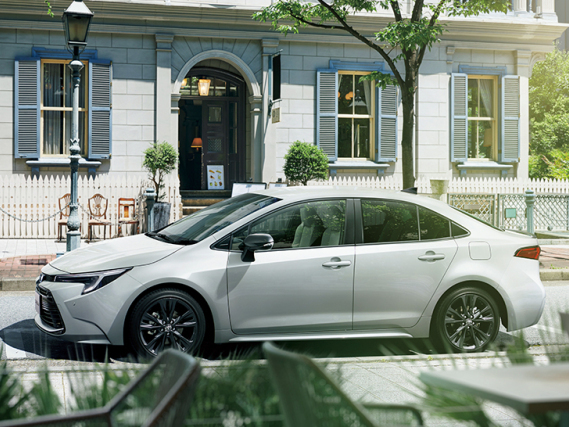
Toyota has Launched a Revamped Version of Corolla in Japan, No Longer Sell Gasoline-Powered Corolla
Kevin WongMay 12, 2025
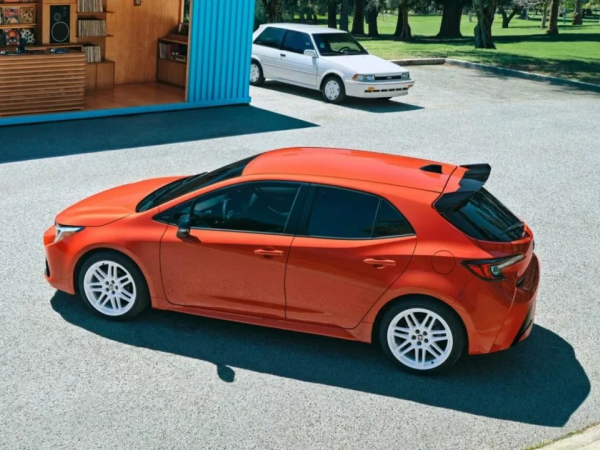
Toyota Plans to Launch 2026 Corolla Hatchback FX: A Nod to the 1987 FX16
WilliamMay 9, 2025
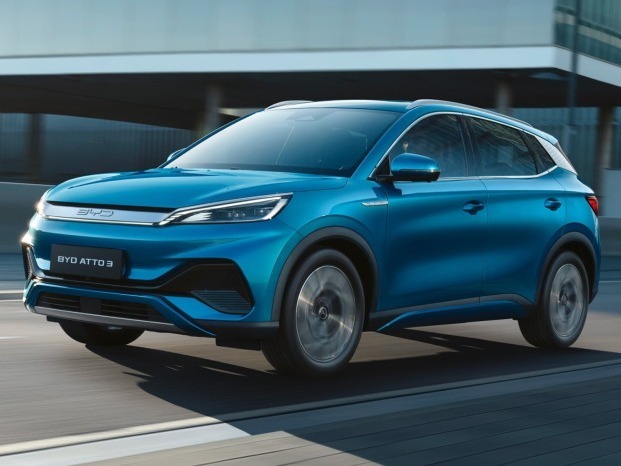
Tesla's sales champion was taken away by BYD, Model 3 and Model Y lost their sales position in multiple regions
AshleyFeb 26, 2025
View More



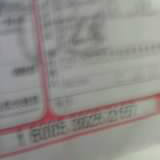








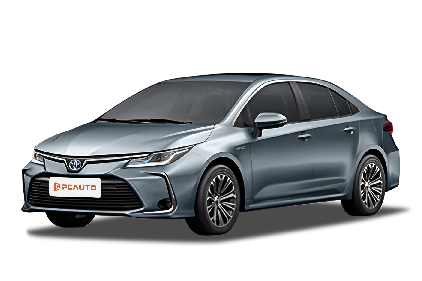





Pros
Cons